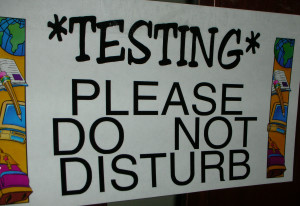 “It is probably not love that makes the world go around, but rather those mutually supportive alliances through which partners recognize their dependence on each other for the achievement of shared and private goals.” —Fred Allen
“It is probably not love that makes the world go around, but rather those mutually supportive alliances through which partners recognize their dependence on each other for the achievement of shared and private goals.” —Fred Allen
By Elizabeth Stincelli, DM
We can accomplish nothing notable alone. We need, as Fred Allen states in the quote above, to form mutually supportive partnerships. This applies both to our personal and our professional lives. In your organization, as the leader, these partnerships must start with you. You must create an environment where support can thrive. You must show your team that you have trust in their abilities and encourage them to develop trust in each other. You must build strong relationships inspire relationship building in others. You must focus on being of service and teaching others to also be of service.
Culture matters
In order to create supportive partnerships, you must establish a firm foundation that is embedded in the very culture of the organization. This culture must encourage and nourish mutually support partnerships at every level of the organization. Employees must know that they are part of a larger vision, that they matter, and that supporting each other is the secret to success.
Trust your team
Trust is a necessary component of supportive partnerships. One of the best ways you can show your support is to make sure everyone knows that you trust your team. When employees see that you have trust in team members, it gives them confidence in each other and allows them to learn to trust both you and their colleagues.
Build relationships
You can only create supportive partnerships if you truly know those who you should be supporting. You must build relationships with your employees on both a personal and a professional level. In turn, they must understand the importance and benefits of building strong relationships with each other.
Be of service
In order to create supportive partnerships, as a leader, you must set the example for your employees of the importance of being of service. You must provide for the needs of employees and serve as a coach, mentor, and cheerleader. Make sure they have access to the resources that they need. And, provide them with ample opportunity to be of service to others in the organization.
Nurture Supportive Partnerships
We are dependent on others for our individual success and the success of the whole. As the leader, you set the example. Entrench supportive partnerships into the culture of your organization. Develop a web of trust throughout your organization. Encourage the building of strong relationships. Be of service and offer opportunities for employees to serve others. When you, as a leader, nurture the creation of supportive partnerships within your organization you set everyone up for success.
© 2016 Elizabeth Stincelli
Liz Stincelli is passionate about recognizing and inspiring the leader in each of us. She is the Founder of Stincelli Advisors where she focuses on helping organizations engage employees and improve organizational culture. Liz holds a Doctor of Management degree with an emphasis on organizational leadership.
Learn more about Liz by visiting her website, stincelliadvisors.com and connect with her on Twitter @infinitestin, Google+, and LinkedIn. You can contact her by email at stincelliadvisors@gmail.com.









